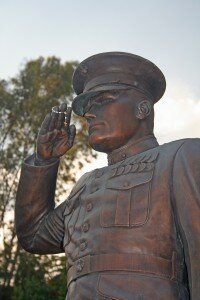CONTRIBUTE!
VOLUNTEER!
CONTACT US!
Grow with Us Plant Sale!
Tweets by @DFL48
Grow with Us Plant Sale!
Get all of your garden needs and help support DFL48! This year, we’re offering you plant cards at both Gerten’s Greenhouses and Garden Center in Inver Grove Heights and Wagner’s Greenhouse in Minneapolis and Bloomington.
Tweets by @DFL48
Nov/14
11
Remembering America’s Veterans in 2014
 On this Veterans Day, a time when we honor those who serve or have served this country in our Armed Forces (along with their families, which who have also sacrificed much), we’re posting information from a Katherine Blakely posted yesterday on the American Progress website. In it, she outlines the challenges facing our current service members and their families.
On this Veterans Day, a time when we honor those who serve or have served this country in our Armed Forces (along with their families, which who have also sacrificed much), we’re posting information from a Katherine Blakely posted yesterday on the American Progress website. In it, she outlines the challenges facing our current service members and their families.
Who are our veterans?
- Approximately 22 million veterans are currently living in the United States.
- About 2.6 million veterans are from the post-9/11 era.
Employment
- According to the U.S Department of Labor’s Bureau of Labor Statistics data, 4.5% of veterans were unemployed as of October 2014, compared to the national unemployment rate of 5.4%
- However, Gulf War II-era veterans — those who served in Iraq and Afghanistan — had a 7.2% unemployment rate in October 2014, with 188,00 out of work — higher than the unemployment rates of veterans of any other era.
- As of October 2014, women Gulf War II-era veterans were more likely to be unemployed, with an 11.2% unemployment rate compared to 7.2% for their male counterparts.
- Young veterans are the most likely to be unemployed. In 2013, 24.3% of male veterans between 18 and 24 years old and 8.9 percent of male veterans between 25 and 34 years old were unemployed. In 2013, 14.3% of female veterans between 18 and 24 years old and 9.8% of female veterans between 25 and 34 years old were unemployed.
Suicide and mental health problems
- There were 255 deaths by suicide in the active duty military in 2013 — 86 in the U.S. Army Reserves and 134 in the U.S. National Guard — down about 10% overall from 2012’s record high.
- Suicide rates declined 18% in the active duty forces and remained flat in the National Guard, but increased by 20% in the Army Reserves.
- An estimated 22 veterans committed suicide each day in 2010, according to a report from the U.S. Department of Veterans Affairs, although this number may be underreported. About 15 of these daily deaths by suicide, or almost 70%, were veterans older than age 50.
- The suicide rate for male veterans younger than age 30 increased by 44% between 2009 and 2011 — the most recent year for which data are available — even as the overall rate of veteran deaths by suicide remained steady.
- Veteran suicide rates have gone down by 16.1% between 1999 and 2010 for male veterans older than age 30 enrolled in the U.S. Department of Veteran Affairs, or VA, health system. Among the national male population age 35 to 64, there was a 27.3% increase in suicide rates over the same time period.
- The VA’s suicide outreach program and improved mental health treatment is having a real impact: In 23 states, suicide rates for male veterans in the VA’s health system when down by around 30%. By contrast, suicide rates went up by around 60^ among veterans who didn’t use the VA’s health system.
- The VA’s mental health treatment is improving, although much remains to be done. Suicide rates have declined among veterans in the VA health system who have been diagnosed with a mental health condition, as well as among those who have survived a pervious suicide attempt. Calls to the Veterans Crisis Line, a national suicide-prevention hotline, have increased every year since it was created in 2007, reaching 193,507 in 2012.
- According to a 2012 RAND Corporation study, about 14% of service members previously deployed to Iraq or Afghanistan reported symptoms indicative of probable post-traumatic stress disorder, or PTSD.
- National Guard and Army Reserve members, women Hispanics, those who served longer deployments, and those who had more extensive exposure to combat were more likely to report PTSD symptoms.
- However, only about half of troops that self-reported symptoms of PTSD or major depression had sought treatment.
- Traumatic brain injury, or TBI, has emerged as a signature injury of the improvised explosive device, or IED blasts characteristic of the wars in Iraq and Afghanistan.
- Between 10% and 20% of Iraq and Afghanistan veterans have suffered a TBI, according to Iraq and Afghanistan Veterans of America estimates. About 10% of all TBIs diagnosed between 2008 and 2011 were diagnosed in combat theatre.
Homelessness
- About 49,933 veterans were homeless in the United States on a single-night survey in January, 2014
- In 2013, veterans made up 12% of all homeless adults, according to the 2013 Annual Homeless Assessment Report conducted by the U.S. Department of Housing and Urban Development, or HUD.
- Veteran homelessness has declined by 35% between 2010 and 2014. The Obama administration has set a goal of ending veteran homelessness by 2015. In 2014, the VA committed $1.4 billion to programs to prevent and end homelessness among veterans.
- According to a 2010 HUD study, young veterans are more than twice as likely to become homeless as nonveteran adults of a similar age.
- Asian, African American and Hispanic veterans are much more likely to be homeless than white veterans.
- Iraq and Afghanistan veterans who become homeless are disproportionally from the lowest military pay grades: 72% of all homeless Iraq and Afghanistan war veterans come from the 44% of veterans with the lowest pay grades, E1 to E4.
- 44% of homeless Iraq and Afghanistan veterans have been diagnosed with a mental health disorder, even though just 18% of all Iraq and Afghanistan veterans have received such a diagnosis.
Addiction
- 27% of Army soldier met the criteria for alcohol abuse in three or four months after returning from Iraq, according to a 2011 study by the National Institute on Drug Abuse.
- A 2009 Pentagon health survey found that one in four soldiers had abused prescription drugs.
- Combat veterans are 31% more likely to begin binge drinking than service members who did not experience combat.
- Surveys by the Substance Abuse and Mental Health Services Administration found that “from 2004 to 2006, 7.1% of veterans — an estimated 1.8 million persons 18 or older — met criteria for a past-year substance use disorder.”
- In 2010, about 788,00 veterans were diagnosed with a substance abuse disorder at a VA medical center. Alcohol abuse accounted for about half of the diagnoses, and 23% of veterans with a substance abuse diagnosis were also diagnosed with PTSD.
The post continues with statistics on the U.S. Department of Veterans Affairs, military sexual trauma, and ends with ways you can help.
Please visit the original post here.
Center for American Progress · veteran's statistics · Veterans Day
 DFL48
DFL48